Description of previous item
Description of next item
Florida's Own Stonehenge
Published October 10, 2014 by Florida Memory
If you travel south from Ocala toward Belleview on U.S. Highway 27/301/441, there’s a place where the northbound and southbound lanes split to go around a tiny patch of thick forest. There doesn’t appear to be much of a reason for this at first, aside from the small satellite sheriff’s office Marion County has in the median. There’s more to this than meets the eye, however.
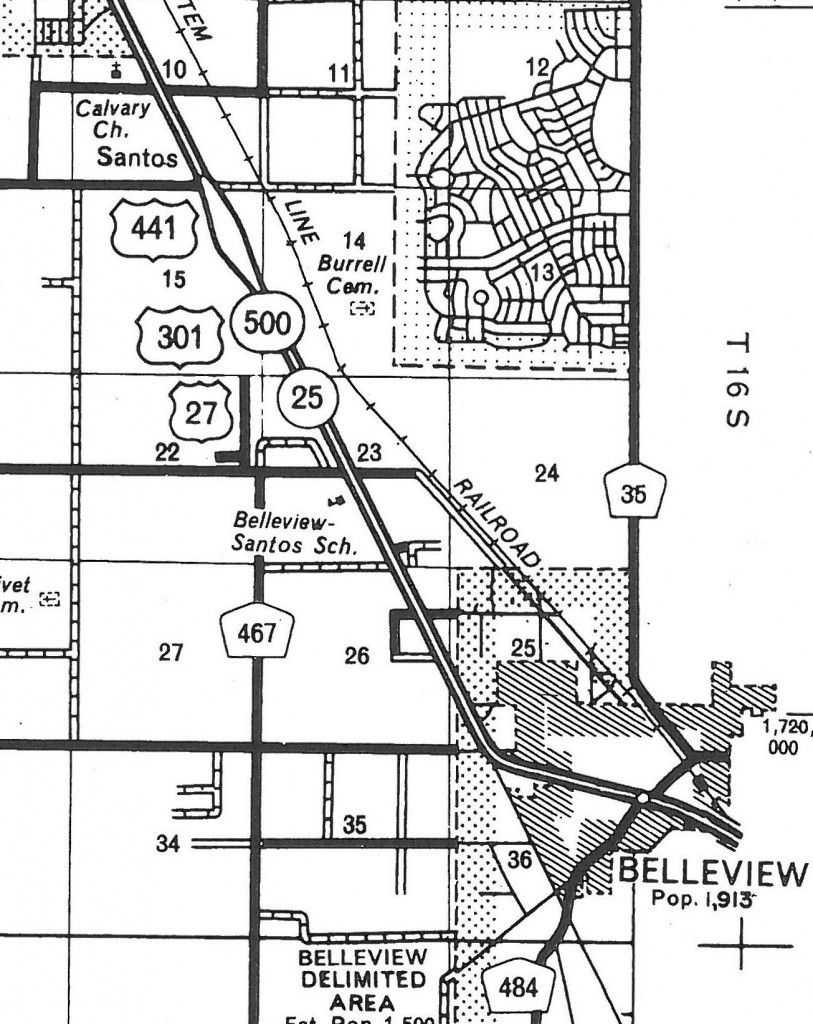
Excerpt of a Florida Department of Transportation map showing U.S. 27/301/441 between Ocala and Belleview. The “Stonehenge” structures are located in the median of this highway where the northbound and southbound lanes bend outward (1977).
Hidden among the vines and oak trees in the middle of this busy highway is Florida’s own Stonehenge. Granted, it’s not nearly as old, and its uses aren’t nearly as shrouded in mystery. That being said, it’s still quite a sight to see in person. Four enormous concrete structures rise nearly as high as the trees, covered in vines, moss, and graffiti. They date back to 1936 when construction began on a bridge to cross a section of the Cross Florida Ship Canal (later known as the Cross Florida Barge Canal).
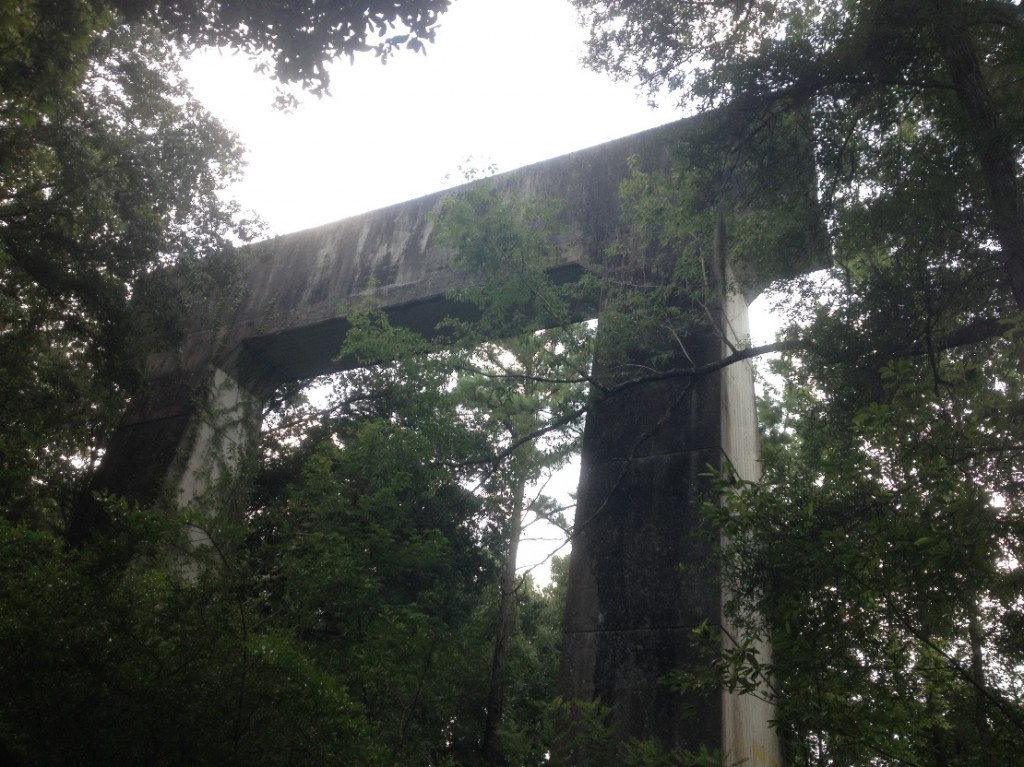
One of the towering structures located in the median of U.S. 27/301/441 at Santos. Photo by the author (2014).
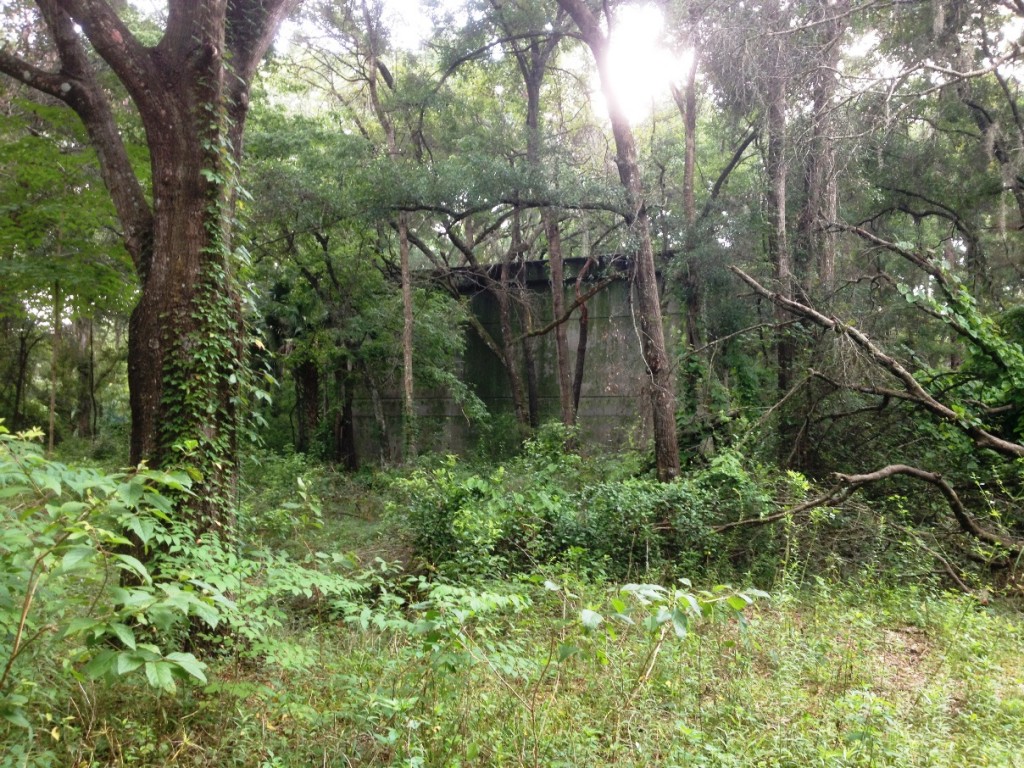
Another concrete megalith peeks out from a tangle of vines and overgrowth at Santos Photo by the author (2014).
The Franklin D. Roosevelt administration had authorized the canal project as a federal relief program. Camp Roosevelt, located a few miles away, served as housing for the workers. The canal had yet to be built at this point, although government authorities had already condemned a strip of land for it, right through the middle of the community of Santos.
The project was short-lived. In June 1936, after barely six months of work, the federal government halted work on the bridge at Santos. Concerns about the canal project’s impact on tourism and the water supply had aroused concern among the public and Congress, and no additional funding was made available for the span.
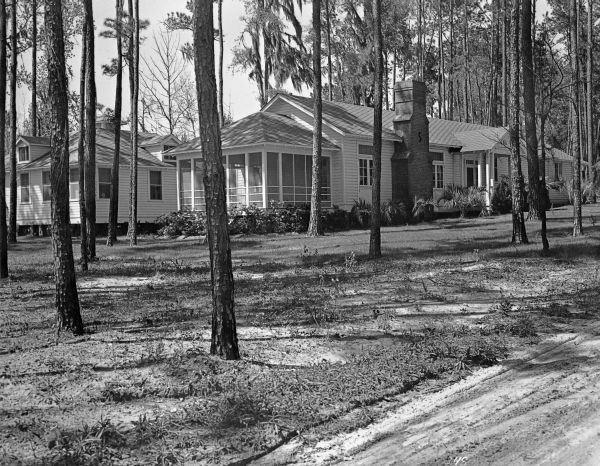
Buildings at Camp Roosevelt, originally established in 1935-36 to house laborers working on the Cross Florida Ship Canal. The camp was later used as a vocational education center (1936).
The bridge piers were, however, already built. What could be done with them? They were too heavy to move, and too expensive to simply destroy. Project managers decided to leave them where they stood. Maybe they thought the canal project would resume sometime in the future and the piers could still be used.
The Cross Florida Ship Canal, renamed the Cross Florida Barge Canal, did resurface in later decades, but the Santos Bridge remained untouched. When U.S. 27/301/441 was widened, the road planners simply bypassed the enormous bridge piers and allowed the space they occupied to grow up naturally. The Cross Florida Greenway now passes through the area, and the old bridge piers are a side attraction for visiting hikers and mountain bikers. The nearby trailhead is called Santos in honor of the community that once prospered there.
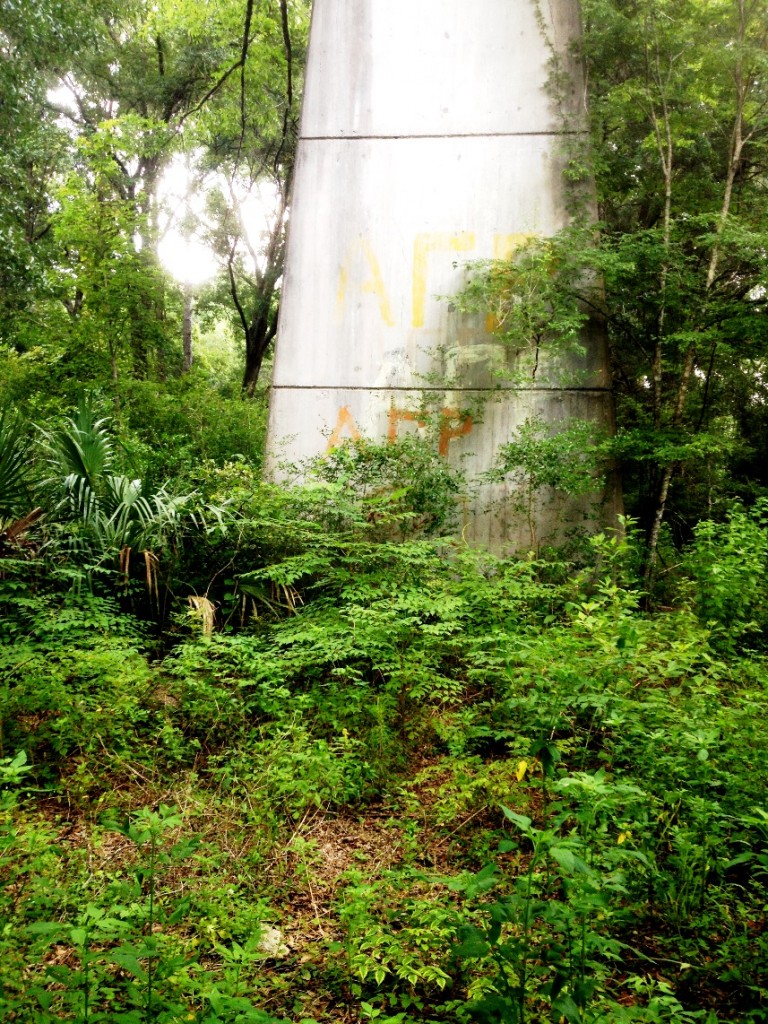
Graffiti from a number of fraternities marks the remnants of the Santos Bridge project. Photo by the author (2014).
The Stonehenge-esque structures at Santos are merely one of many mysterious monuments to the past hiding in plain sight in Florida. What mysterious historical structures are located in your community? Search the Florida Photographic Collection to see if we have photos of them, or consider donating a photo by contacting us.
Cite This Article
Chicago Manual of Style
(17th Edition)Florida Memory. "Florida's Own Stonehenge." Floridiana, 2014. https://www.floridamemory.com/items/show/295225.
MLA
(9th Edition)Florida Memory. "Florida's Own Stonehenge." Floridiana, 2014, https://www.floridamemory.com/items/show/295225. Accessed December 5, 2025.
APA
(7th Edition)Florida Memory. (2014, October 10). Florida's Own Stonehenge. Floridiana. Retrieved from https://www.floridamemory.com/items/show/295225

 Listen: The World Program
Listen: The World Program